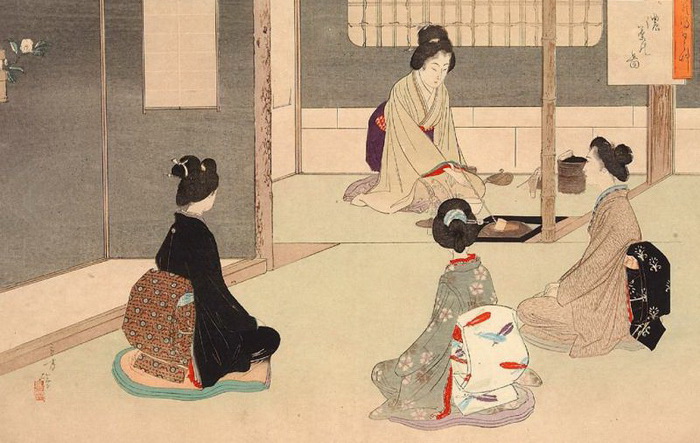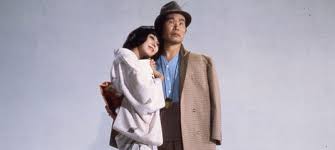Japanese genre movie. Yakuza Eyga
 The Yakuza movie screening followed two canons: Yakuza – noble fighters against evil, and Yakuza – greedy villains. From a historical point of view, both positions are justified. The early Yakuza (17-18th century) deserve to be romanticized even more than samurai. Then they were the lone outsiders hired by the peasants to fight the unbridled ronin and samurai in the civil service (hence the first friction with the law). Peasants often could not pay, so such self-defense units earned their living by playing games (8-9-3 or “i-ku-dza” – a losing combination) or small-scale trading. But then the Yakuza began to unite, pay more attention to making money, and the team does not lead to anything good. Therefore, by the beginning of the 20th century, the Yakuza began to become like ordinary bandits, and in the years after the Second World War they finally transformed into organized crime without traces of past romance. Add their fusion with business and politics – the picture is obvious (a funny moment: the Yakuza are known for supporting patriotic parties, although it is known that they owe American capital to becoming a yakuza – the occupation forces saw the Yakuza as a counterweight to the Communists).
The Yakuza movie screening followed two canons: Yakuza – noble fighters against evil, and Yakuza – greedy villains. From a historical point of view, both positions are justified. The early Yakuza (17-18th century) deserve to be romanticized even more than samurai. Then they were the lone outsiders hired by the peasants to fight the unbridled ronin and samurai in the civil service (hence the first friction with the law). Peasants often could not pay, so such self-defense units earned their living by playing games (8-9-3 or “i-ku-dza” – a losing combination) or small-scale trading. But then the Yakuza began to unite, pay more attention to making money, and the team does not lead to anything good. Therefore, by the beginning of the 20th century, the Yakuza began to become like ordinary bandits, and in the years after the Second World War they finally transformed into organized crime without traces of past romance. Add their fusion with business and politics – the picture is obvious (a funny moment: the Yakuza are known for supporting patriotic parties, although it is known that they owe American capital to becoming a yakuza – the occupation forces saw the Yakuza as a counterweight to the Communists).
Japanese genre movie. Yakuza Eyga
Now about the movie. Yakuza have been present in the cinema since the 1920s, but the heyday of the genre fell on the 60s and 70s and was associated with Toei and Nikkatsu studios, although interesting things were done on Toho, Shochika, and on the Day. It was “Day” in 1960 that released “Afraid to die” / “Karakkaza yaro” by Yasuzo Masumura with the notorious Yukio Mishima. The intellectual and cosmopolitan Masumura made an interesting satire on the yakuza world, showing them without much sympathy and anticipating something of the “dzitsuroku” of the 70s, but still his film cannot be compared with the paintings of the masters of “dzitsuroku”, the same Fukasaku. Later on, Dayey focused on the popular Ninkyo subgenre in the 60s, with a bias just in the romanticization of the Yakuza, but the studio did not reach the level of the best Toye tapes. Although the Woman Gambler Expert / Onna tobakushi series 1966-1971 with Kyoko Enami and the Young Boss / Waka oyabun 1965-67 were popular with Raizo Ichikawa (the director Kazuo Ikehiro worked on this series, he does not consider the films successful).
Another thing is Nikkatsu. Their “borderless action” and “ninkyo” were distinguished by a high level. Although at the studio strange things sometimes happened. In the films, loners and individualists were often glorified, but the main loner and individualist of the studio, Seizun Suzuki, was fired (although the loner and individualist Teruo Ishii was immediately attracted), when by the beginning of the 70s the studio was on the verge of transition from obsolete “ninkyo” to something now new, then bosses reoriented the studio to eroticism and lost many leading actors and directors. But the worst part is that very few Nikkatsu films can be found today.
The easiest way is just with Suzuki. Seijun Suzuki is an outstanding director. A master of combining surreal imagery, visual anarchy with masterly set battle scenes. His most significant works are Tokyo Wanderer (Tokyo drifter / Tokyo nagaremono) 1966 and Marked for Murder (Branded to kill / Koroshi no rakuin) 1967 (for the last he was dismissed by counting the film “Incomprehensible”). Although above all you can put the magnificent film “Youth of the beast” (“Youth of the beast” / “Yaju no seishun”) 1963, where visual riots do not interfere with the plot at all, but only enhance the effect of this paragraph of “Red Harvest” by Hammett.
Among the other prominent directors of the studio, I note the former assistant Suzuki Yasuharu Hasebe and his “Assassins in Black Tights” 1966 (“Black tight killers” / “Ore ni sawaruto obanaize”), Hiroshi Noguchi (Girl play trilogy cats ”/“ Cat girl gambling ”/“ Mesu neko bakuchi ”- 1965), Takashi Nomura (“ My gun is my passport ”/“ My gun is my passport ”/“ Korutto wa ore no pasuupotto ”- 1967), Buichi Saito (Ruthless gambler – 1969), Yukihiro Sawada (Kanto society of leading mobsters / Kanto kanbukai – 1971). Of course, Teruo Ishii, who was invited to Nikkatsu, effectively made two spectacular films about the Yakuza women, The Friendly Killer (Nobori ryu tekkahada – 1969) and The Tattooed Swordswoman (“ Tattoed swordswoman ”/“ Kaidan nobori ryu ”- 1970), affirming Meiko Kaji in the last star status.
Among the studio stars, besides Kaji, I’ll name the following: Chieko Matsubara (“Merciless Player”, “Assassins in Black Tights”, “Tokyo Wanderer”), Hiroko Ogi (“Friendly Killer”), Yumiko Nogawa / Yumiko Nogawa (“Cat Girl Game”). From the actors: Jo Shishido / Jo Shishido (“The Beast’s Youth”, “Marked for Murder”, “My Gun is My Passport”), Akira Kobayashi / Akira Kobayashi (“Assassins in Black Tights”).




